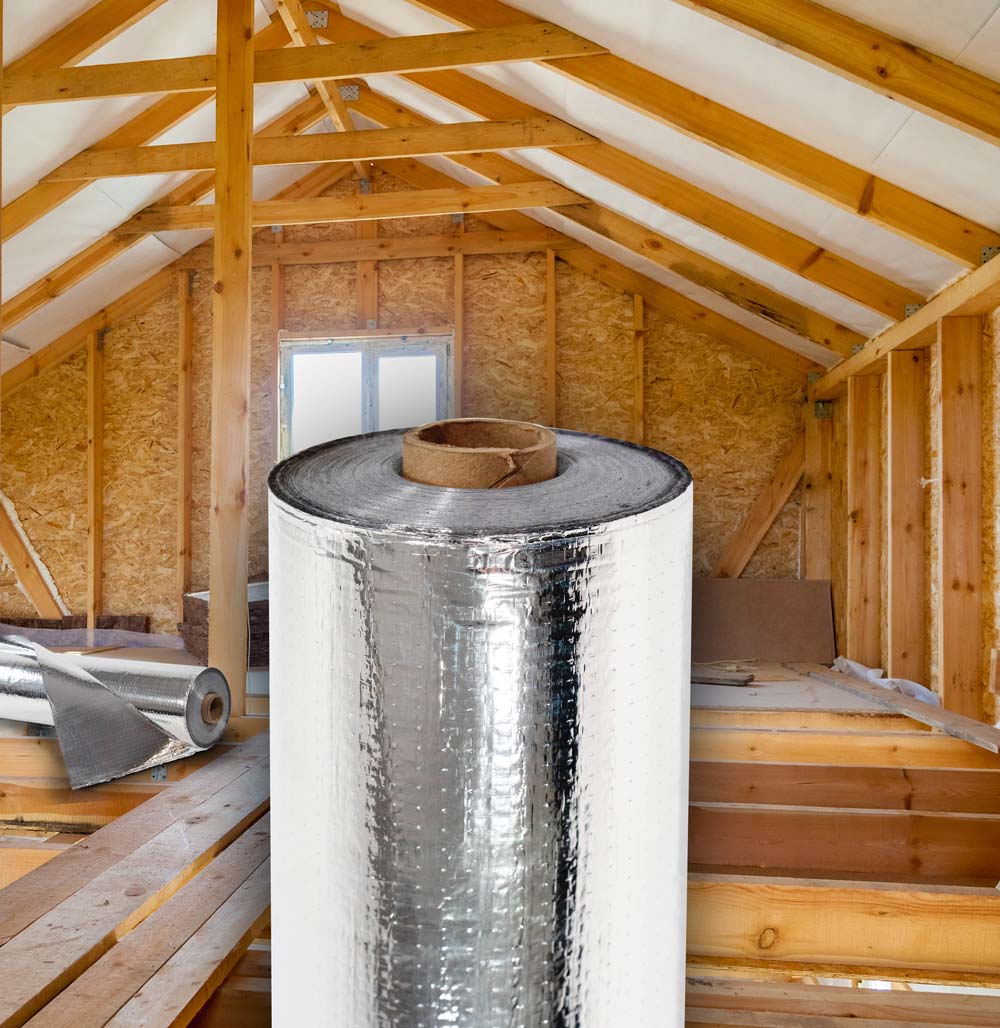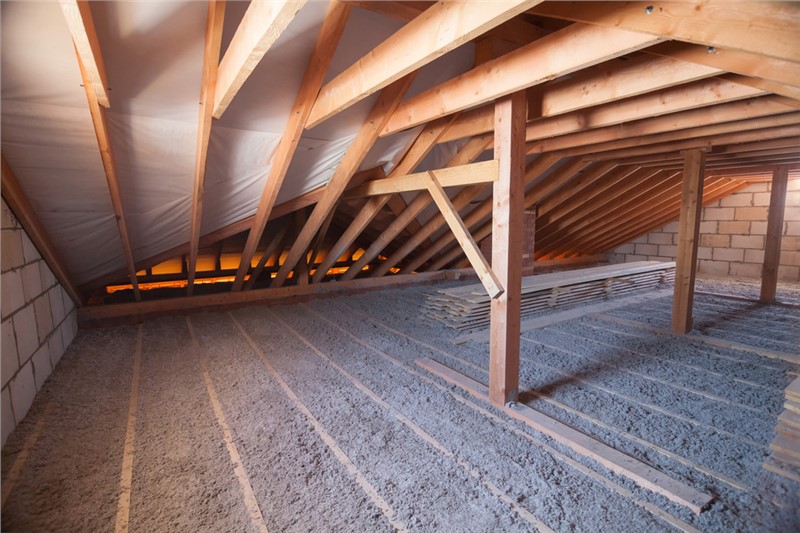Attic Insulation DFW: The Key to Lower Utility Bills and Improved Home Comfort
Attic Insulation DFW: The Key to Lower Utility Bills and Improved Home Comfort
Blog Article
Discover the Various Kinds Of Attic Insulation and Their One-of-a-kind Benefits for Your Home's Energy Performance

Fiberglass Insulation
Fiberglass insulation is one of the most typically made use of products for attic room insulation because of its superb thermal efficiency and cost-effectiveness. Composed of tiny glass fibers, this material effectively traps air, creating an insulating barrier that aids keep constant indoor temperatures. Its high R-value per inch makes it particularly effective at resisting warm transfer, which is vital for energy conservation in homes.
Installation of fiberglass insulation is reasonably uncomplicated, often available in batts or loose-fill types, fitting various attic configurations. Additionally, it is non-combustible and resistant to dampness, reducing the threat of mold development. This durability adds to its longevity, making fiberglass a sensible long-term financial investment for property owners.
Moreover, fiberglass insulation is commonly made from recycled materials, which improves its eco-friendliness. The material can likewise add to soundproofing, decreasing noise transfer in between spaces. While it is necessary to use protective gear throughout installation to stay clear of inflammation from the fibers, the overall advantages of fiberglass insulation, including energy savings and ecological factors to consider, make it a preferred choice for enhancing attic performance and promoting a comfy living environment.
Spray Foam Insulation
Spray foam insulation is an extremely efficient choice for attic room insulation, recognized for its remarkable air sealing and thermal performance. This cutting-edge insulation material is made up of a mix of isocyanate and polyol resin, which, when integrated, broadens rapidly to fill up voids and dental caries in the attic space. Its capability to follow different surface areas guarantees a constant barrier against air leakages, considerably decreasing warmth loss throughout chillier months and heat gain throughout warmer periods.
One of the essential advantages of spray foam insulation is its high R-value per inch, which indicates it offers excellent thermal resistance in a fairly thin application. This is especially useful in attic rooms where area is commonly restricted. Additionally, spray foam can assist minimize dampness buildup, decreasing the threat of mold and mildew and mold growth, which can be detrimental to both the framework and indoor air high quality.
While the initial cost of spray foam insulation might be greater than standard choices, its lasting energy cost savings, coupled with enhanced convenience and enhanced home worth, make it a beneficial financial investment for home owners seeking enhanced power effectiveness. Attic Insulation DFW. In general, spray foam insulation stands apart as an efficient solution for maximizing attic insulation
Cellulose Insulation

Cellulose insulation is a popular option for attic insulation, mainly composed of recycled paper products treated with fire retardants. This eco-friendly choice is known for its outstanding thermal performance, efficiently decreasing warmth transfer in both summertime and winter months. The dense structure of cellulose allows it to load spaces and spaces in attic room areas, offering a smooth barrier versus air leaks.
One of the considerable benefits of cellulose insulation is its capacity to resist mold and bugs, owing to the fire resistant treatments utilized throughout manufacturing. Furthermore, it boasts a high R-value per inch, which equates right into remarkable energy efficiency. Homeowners can expect reduced home heating and cooling prices as a result of improved insulation.
Setup is normally accomplished with blowing loosened cellulose right into the wanted location, enabling a quick and efficient procedure. This approach likewise lessens disturbance to the existing structure. In addition, cellulose insulation has a fairly reduced ecological impact, as its production procedure makes use of recycled products, contributing to sustainable building methods.
Rock Wool Insulation
Among the different choices for attic room insulation, rock woollen, likewise called mineral wool, stands out due to its excellent thermal and acoustic performance. Made from all-natural or recycled materials, rock wool is created view website by melting rock and spinning it into fibers, resulting in an item that offers excellent insulation properties.
Among the significant benefits of rock wool insulation is its high R-value, which shows its performance in resisting warm flow. This characteristic not just boosts energy effectiveness but also adds to keeping a comfortable interior temperature level year-round. Furthermore, rock woollen is naturally fire-resistant, making it a safer option for homes as it can hold up against heats without melting or releasing toxic fumes.
Moreover, rock woollen insulation excels in soundproofing abilities, effectively minimizing noise transmission between rooms and from outdoors sources. Generally, rock woollen insulation offers a thorough service for enhancing energy performance, security, and comfort in domestic setups.
Glowing Barrier Insulation
Radiant obstacle insulation functions as an efficient service for decreasing heat transfer in attics, especially in warmer climates. This sort of insulation jobs by mirroring glowing warmth far from living spaces, therefore reducing the quantity of warm that gets in a home throughout hot weather - Attic Insulation DFW. Usually made up of a very reflective product, such as light weight aluminum foil, glowing barriers are installed in attics, dealing with the roof, where they can intercept inbound warm from the sunlight
The main advantage of radiant barrier insulation is its ability to lower cooling costs. By reflecting warm instead of absorbing it, glowing obstacles can aid keep a more stable indoor temperature level, lowering the work on cooling systems. This efficiency converts right into lower energy bills and enhanced comfort for house owners.
Along with energy savings, radiant barriers can additionally add to improved interior air quality. By decreasing heat buildup, they assist lessen humidity levels, which can protect against mold and mildew development and improve general air circulation. When set up appropriately, radiant obstacle insulation can be a vital addition to any energy-efficient home, making it a worthwhile factor to consider for house owners aiming to boost their attic insulation strategy.
Verdict
In final thought, comprehending the various kinds of attic insulation-- fiberglass, spray foam, cellulose, rock woollen, and radiant obstacles-- allows homeowners to make enlightened decisions more regarding energy performance. Each insulation type offers one-of-a-kind advantages, such as premium thermal resistance, moisture monitoring, and audio attenuation. By picking the suitable insulation product, substantial decreases in energy expenses can be attained, along with improvements in indoor comfort. Inevitably, the best choice contributes to a much more lasting living setting and advertises total power preservation.

In verdict, comprehending the various kinds of attic room insulation-- fiberglass, spray foam, cellulose, rock woollen, and radiant obstacles-- allows homeowners to make educated decisions relating to energy effectiveness.
Report this page